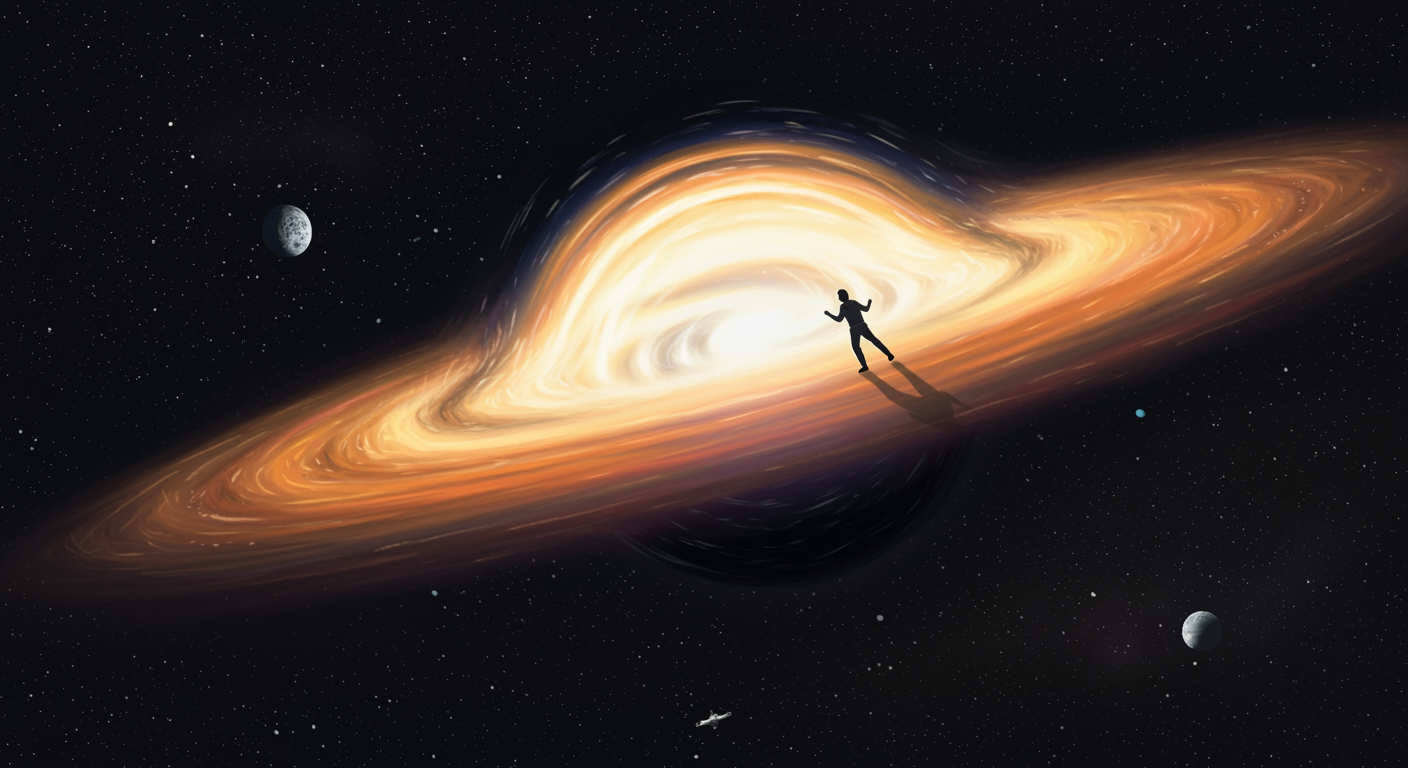
When you hear “black hole,” what image springs to mind? For many, it’s a terrifying cosmic drain, indiscriminately devouring everything in its path, sucking up stars and planets like a giant, unstoppable vacuum cleaner. Pop culture often reinforces this dramatic, yet fundamentally inaccurate, portrayal of one of the universe’s most enigmatic phenomena.
However, the reality of black holes, while no less profound, is far more orderly and adheres strictly to the laws of physics. Despite their immense gravitational pull, black holes are surprisingly selective in what they influence, and they certainly don’t wander the cosmos hoovering up celestial objects. It’s a common misconception, but understanding why they aren’t the vacuum cleaners of space helps illuminate how gravity truly works on a grand scale.
At its core, a black hole is fundamentally a region of spacetime where gravity is so strong that nothing, not even light, can escape. This extreme gravity arises from a massive amount of matter compressed into an incredibly small volume. The boundary beyond which escape is impossible is known as the event horizon, a point of no return for anything that crosses it. But crucially, this intense gravitational field doesn’t operate by some exotic, super-sucking force; it’s simply a more extreme manifestation of the same gravitational force that keeps our feet on the ground.
The critical detail often overlooked in the “cosmic vacuum cleaner” narrative is that a black hole’s gravity, while intense, operates by the same fundamental laws as the gravity of any other celestial body, like our Sun or Earth. The strength of gravity isn’t solely about how dense an object is, but also about its total mass and, perhaps most importantly for orbital mechanics, the distance from that mass. If an object is far enough away, it experiences the same gravitational pull from a black hole as it would from any other object of identical mass.
Consider our own Sun. It holds Earth and all other planets in its gravitational embrace, defining our solar system. Now, imagine if our Sun were, by some cosmic magic, instantly replaced by a black hole of the exact same mass. What would happen to Earth? You might picture us being immediately swallowed. But in reality, nothing would change about Earth’s orbit. Our planet would continue to circle this newly formed solar-mass black hole exactly as it orbits the Sun now. The black hole’s gravity, stemming from the same mass, would exert the same pull on us. The only differences would be the absence of light and heat, and the immediate vicinity of the black hole would become an incredibly dangerous place, but our orbital path around it would remain unchanged. We wouldn’t be “sucked in” because our distance and tangential velocity would keep us safely orbiting.
So, if they don’t actively “suck,” how do black holes consume matter? They don’t actively seek out cosmic meals. Instead, objects fall into a black hole only if they pass within its event horizon, much like an apple falling to Earth because it’s too close to escape our planet’s gravitational pull. For this to happen in space, the object must be on a direct collision course or be stripped from its existing orbit by powerful external forces, perhaps a close encounter with another star or a particularly energetic gravitational perturbation.
Material that gets too close but doesn’t fall directly in often forms a swirling accretion disk around the black hole. This disk, composed of gas, dust, and sometimes fragmented stars, gradually spirals inward, superheated by friction and gravitational forces. It’s this intensely bright, X-ray-emitting disk that astronomers often observe, not the black hole itself. The matter within the disk slowly loses angular momentum, and eventually, particles reach the event horizon and fall in, but it’s a gradual process, not an instant suction.
Furthermore, many black holes, particularly the supermassive ones found at the centers of galaxies like our own Milky Way, act more like gravitational anchors. They influence the orbits of entire star systems and vast gas clouds around them, holding the galaxy together without pulling in every individual star. Our solar system, for instance, orbits the supermassive black hole Sagittarius A* at the heart of our galaxy, but we are a safe 26,000 light-years away. At this immense distance, we experience its gravitational pull in a stable, distant orbit, much like how the Earth orbits the Sun without fear of falling into it. The gravitational field is strong, but diffuse over such vast distances.
The astronomy of black holes, while complex, teaches us important lessons about the elegance of cosmic mechanics. Rather than being chaotic devourers, they are powerful gravitational entities that adhere to the immutable laws of physics. They are indeed formidable, but their influence is localized and predictable, based directly on their mass and the distance of other objects from them.
Understanding this distinction helps us appreciate the intricate dance of cosmic mechanics and the delicate balance that allows stars and planets to thrive, even in the gravitational neighborhoods of these behemoths. Far from being cosmic vacuum cleaners, black holes play a crucial, if sometimes misunderstood, role in the structure and evolution of the universe, quietly shaping the paths of billions of stars without devouring them.